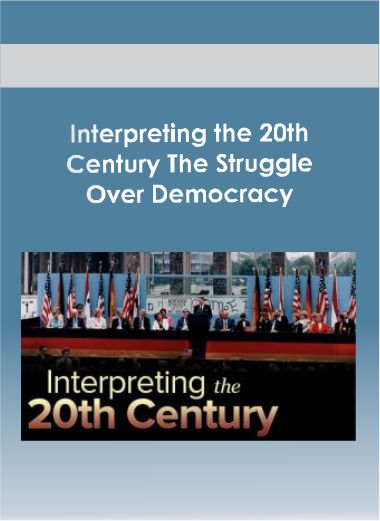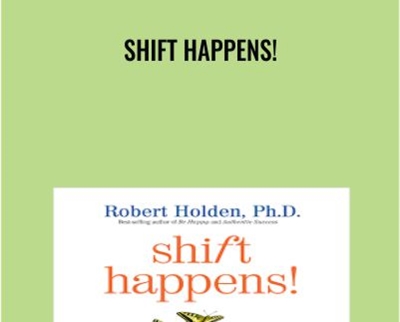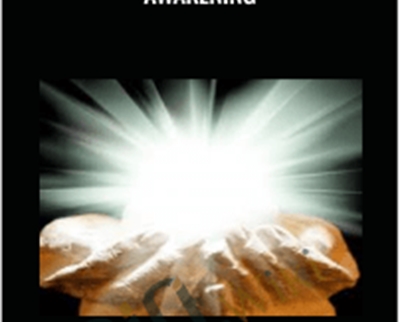Buy Interpreting the 20th Century: The Struggle Over Democracy Course at GBesy. We actively participate in Groupbuys and are committed to sharing knowledge with a wider audience. Rest assured, the quality of our courses matches that of the original sale page. If you prefer, you can also buy directly from the sale page at the full price (the SALEPAGE link is directly provided in the post).
 This course is available now – Download it now
This course is available now – Download it now
Course Description: The level of change experienced over a 100-year period is what most defines the 20th century,” states Professor Pamela Radcliff.
All will be sent via email after you sign up.
Interpreting the 20th Century: The Struggle Over Democracy course with special price just for you: $249 $51
Interpreting the 20th Century: The Struggle Over Democracy
The 20th century transformed the political, social, and economic structures of the world in ways no one could have imagined as the 1800s came to a close. It was a time of intense and rapid change that stretches the capacity of the imagination: first flight and space flight, the Manhattan Project and the Welfare State, Nietzsche and Freud, the Great Depression and inflation, moving pictures and home computers, the Cold War and terrorism—and war and peace.
Hide Full Description
“The level of change experienced over a 100-year period is what most defines the 20th century,” states Professor Pamela Radcliff.
Even today, more than a century later, that transformation is far from complete. The nations of the third world, at last free from the colonialism and imperialism that once marked their relationship with the West, are still caught up in the even more complex search for politically stable democracy and economic prosperity.
Interpreting the 20th Century: The Struggle Over Democracy is a comprehensive 48-lecture examination of this extraordinary time.
It is a course designed around history’s ideas as much as its events, revealing how those ideas both influenced events and were in turn influenced by them to shape today’s world.
It is a unique opportunity to gain a multidisciplinary understanding of how the modern world came to be and how democracy has emerged as a political ideal, although the parameters of a truly democratic world order are still being vigorously contested.
The subject’s very nature demands not only an ability to distill political and economic trends from a century of world history, but to explain them with clarity, drawing on other disciplines as necessary to make key points come alive.
Professor Pamela Radcliff defines the perspective of the course as including what she calls the “Enlightenment Project”—the adoption of liberal, democratic, rationalist principles in much of the world—while emphasizing the unresolved nature of the struggle for democracy.
She concentrates on keeping the big picture extremely clear as she moves across whole eras, entire continents, and disciplines as specialized as international trade balances and movements in literature and art.
She consistently shows all sides of an issue when scholars are divided in their opinions and she makes generous use of primary sources, frequently quoting from those sources to ensure that her lectures convey the richest possible sense of each subject.
To make the tremendous breadth of the course comprehensible, Professor Radcliff presents it chronologically in seven sections best representing this struggle:
Section 1 is an introduction to the 20th century, which most scholars now mark from 1914 and the beginning of World War I.
Section 2 consists of the various crises faced by the West in the years between the wars.
Section 3 covers the challenge to democracy presented by Fascism and Communism, including the many approaches to totalitarianism represented by Nazi Germany and the Soviet Union.
Section 4 discusses external challenges to western power from China, India, Mexico, and Japan.
Section 5 explores World War II, including the Holocaust and the rise of Existentialism in post-war Europe.
Section 6 examines the post-World War II world order, including the Cold War, the changing relationship between science and the state, and the rise of the welfare state.
Section 7 concludes the course with a discussion of the challenges of development in a decolonizing world.
Explore a Range of Ideas in Depth
In detail, you will cover topics as varied as:
The “crisis of meaning” unleashed by World War I challenged the political, cultural, and economic values of Western Europe and set the stage for decades of turmoil
The different approaches of Fascism and Communism to organizing and mobilizing the masses
How art provided a window into the psychological forces swirling through public life.
This course’s intellectual breadth and vigor isn’t reflected in lofty overview, but in vivid, ground-level history that lets you see those forces at work in:
The trenches of World War I, where new technologies created a level of carnage unparalleled in history
The theatrical action of Samuel Becket’s Waiting for Godot, turning away from the hope of salvation in a post-Holocaust world to seek dignity in individual struggle
The collective ability of a disillusioned generation here in the United States and around the world—protesting over the Vietnam War, inequality of education, the lack of gay rights—to transform political culture and the nature of the democratic debate
The march through a dazzling variety of famous, infamous, and lesser-known figures who shaped and reflected the century’s tumultuous events and changes, such as Samuel Becket, Marcel Duchamps, Frantz Fanon, Vladimir Lenin, Sigmund Freud, Alexandra Kollontai, Adolf Hitler, Josef Stalin, Mahatma Gandhi, Mao Tse-tung, Mikhail Gorbachev, Emiliano Zapata, Theodor Herzl, Kwame Nkrumah, and Martin Luther King, Jr.
Ideas Come Alive through Detailed Case Studies
For an even closer focus, the course also includes several lectures devoted to detailed case studies that illustrate how the models covered in the course have been translated into actual practice in post-colonial nations.
You see, for example, how the developmental model put into effect in Communist China differs from that used in Democratic India—and why—and the different results achieved in two countries that began their developmental process with very similar problems.
And see how they both differ from the authoritarian model that has been put into place in Japan.
Similarly, you’ll get a chance to see three models of feminism that have resulted from the global women’s movement:
Women organizing around their status as mothers, as in the “Mothers of the Plaza de Mayo” who alerted the world to Argentina’s “disappeared”
The “everyday resistance” model linked to the world’s poorest and least empowered women such as those in India’s southwestern state of Tamil Nadu
The more familiar model of “equal rights” feminism seen here in the United States.
Plus, you frequently venture off the pathways of geopolitics or national revolution as you view the course’s issues through different lenses. In Lecture 5, for example, you’ll encounter Dadaist, Surrealists, and Futurist artists as they turn the ideas of Freud and Nietzsche into a chaotic post-World War I attack on the certainty, rationality, and objectivity of the 19th-century Western culture they felt had betrayed them.
In examining paintings by artists like Hannah Hoch or Otto Dix, or hearing the searing command of the Futurist Manifesto to “leave good sense behind us like a hideous husk,” you understand the mood of an artistic world desperately trying to reject the past and steer a course toward what had to be a more promising future.
The Challenge of Defining Democracy
The main issue you address in this course, according to Professor Radcliff, is still a work in progress.
“Even after the better part of a century, the world’s nations are still trying to define what real democracy is and how to establish it—not only within nations but between them as well, in the sense of fostering and sustaining relationships based on equality and not on raw power,” she notes.
It is an extraordinary process that we continue to watch.
Get Interpreting the 20th Century: The Struggle Over Democracy full course for 51 USD. Sign up now to receive your own special offers!
For further information, Struggle Over Democracy course, Struggle Over Democracy video, Struggle Over Democracy book, Struggle Over Democracy download
Interpreting the 20th Century|The Struggle Over Democracy
Buy the Interpreting the 20th Century: The Struggle Over Democracy course at the best price at GBesy.. After your purchase, you will get access to the downloads page. You can download all the files associated in your order at here and we will also send a download notification email via your mail.
Unlock your full potential with Interpreting the 20th Century: The Struggle Over Democracy courses. our courses are designed to help you excel.
Why wait? Take the first step towards greatness by purchasing Interpreting the 20th Century: The Struggle Over Democracy courses today. We offer a seamless and secure purchasing experience, ensuring your peace of mind. With our trusted payment gateways, Stripe and PayPal, you can confidently complete your transaction knowing that your financial information is protected.
Stripe, known for its robust security measures, provides a safe and reliable payment process. With its encrypted technology, your sensitive data remains confidential throughout the transaction. Rest assured that your purchase is protected.
PayPal, a globally recognized payment platform, offers an additional layer of security. With its buyer protection program, you can feel confident in your purchase. PayPal ensures that your financial details are safeguarded, allowing you to focus on your learning journey.
Is it secure? to Use of?
- Your identity is completely confidential. We do not share your information with anyone. So it is absolutely safe to buy the Interpreting the 20th Century: The Struggle Over Democracy course.
- 100% Safe Checkout Privateness coverage
- Communication and encryption of sensitive knowledge
- All card numbers are encrypted using AES at relaxation-256 and transmitting card numbers runs in a separate internet hosting atmosphere, and doesn’t share or save any data.
How can this course be delivered?
- After your successful payment this “Interpreting the 20th Century: The Struggle Over Democracy course”, Most of the products will come to you immediately. But for some products were posted for offer. Please wait for our response, it might take a few hours due to the time zone difference.
- If this happens, please wait. The technical department will process the link shortly after. You will receive notifications directly by e-mail. We appreciate your wait.
What Shipping Methods Are Available?
- You will receive a download link in the invoice or YOUR ACCOUNT.
- The course link always exists. use your account to login and download the Interpreting the 20th Century: The Struggle Over Democracy course whenever you need.
- You only need to visit a single link, and you can get all the Interpreting the 20th Century: The Struggle Over Democracy course content at once.
- You can do your learning online. You can be downloaded for better results and can study anywhere on any device. Make sure your system does not sleep during the download.
How Do I Track Order?
- We always notice the status of your order immediately after your payment. After 7 days if there is no download link, the system will automatically complete your money.
- We love to hear from you. Please don’t hesitate to email us with any comments, questions and suggestions.
![GBesy [GB] GBesy [GB]](https://www.gbesy.com/wp-content/uploads/2023/05/gbesy-Logo-full-100.png)



 Purchase this course you will earn
Purchase this course you will earn 






Reviews
There are no reviews yet.